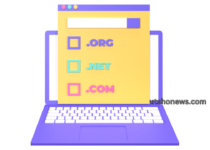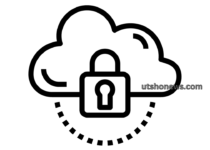Unlocking the Potential of Tech Domains: How to Boost CPC and Drive Revenue
In today’s digital age, the internet has become an integral part of our lives. With the rapid advancements in technology, businesses are increasingly relying on online platforms to reach their target audience. As a result, the demand for tech domains has soared. But what exactly is a tech domain?
A tech domain is a web address that is specifically tailored to the technology industry. It typically ends with extensions such as .tech, .io, or .dev. These domains provide a unique identity to tech companies, startups, and individuals working in the tech field. They not only help establish a strong online presence but also offer numerous benefits that can boost the Cost Per Click (CPC) and drive revenue.
Understanding the Potential of Tech Domains
Tech domains offer a wide range of advantages that can significantly impact your online business. Firstly, they provide instant credibility and brand recognition. Having a tech domain instantly conveys to your target audience that you are a tech-savvy, innovative company. This can help build trust and attract more visitors to your website.
Secondly, tech domains are highly memorable. With the increasing competition in the online world, having a domain name that is easy to remember can give you a competitive edge. A memorable domain name increases the chances of repeat visits and word-of-mouth referrals, ultimately driving more traffic to your site.
Furthermore, tech domains allow you to target a specific audience. By incorporating relevant keywords into your domain name, you can attract users who are specifically searching for tech-related products or services. This targeted approach can significantly increase your CPC as the visitors are more likely to click on ads related to their search intent.
Benefits of Owning a Tech Domain
Owning a tech domain can unlock several benefits that can boost your CPC and drive revenue. Firstly, it can improve your search engine rankings. Search engines, like Google, prioritize websites with relevant domain names when displaying search results. By having a tech domain, you increase your chances of appearing higher in search engine rankings, leading to increased organic traffic and higher CPC.
Secondly, a tech domain allows you to build a strong online brand. With a tech domain, you can create a unique and memorable online presence that resonates with your target audience. This can lead to increased brand recognition, customer loyalty, and ultimately, higher revenue.
Additionally, owning a tech domain gives you the flexibility to create personalized email addresses. A professional email address that matches your domain name can significantly enhance your brand image and credibility. It also allows you to establish direct communication channels with your customers, leading to increased customer engagement and potential sales.
Factors that Influence CPC
CPC, or Cost Per Click, is a crucial metric that determines the revenue generated from the ads displayed on your website. Several factors influence CPC, and understanding them is essential to boost your earnings. The following are some key factors that can impact your CPC:
- Relevance: The relevance of the ads displayed on your website plays a significant role in determining the CPC. The more relevant the ads are to your content and target audience, the higher the CPC is likely to be. It is essential to ensure that your tech domain and website content align with the ad network’s guidelines and policies.
- Quality Score: Ad networks assign a quality score to your website based on factors such as the relevance of your content, user experience, and ad placement. A higher quality score can lead to higher CPC as it indicates a higher level of user engagement and satisfaction.
- Competition: The level of competition in your niche or industry can affect CPC. If there are many advertisers competing for the same keywords or ad space, the CPC is likely to be higher. It is crucial to conduct thorough keyword research and identify less competitive yet relevant keywords to maximize your CPC.
Strategies to Boost CPC for Tech Domains
Boosting CPC for tech domains requires a combination of strategic planning and optimization techniques. Here are some effective strategies to consider:
1. Keyword Research and Optimization: Conduct comprehensive keyword research to identify high-value keywords relevant to your tech domain. Use these keywords strategically in your website content, meta tags, and ad campaigns to attract targeted traffic and increase CPC.
2. Improve User Experience: A positive user experience is crucial for increasing CPC. Ensure your website is mobile-friendly, loads quickly, and has clear navigation. Optimize your landing pages to provide a seamless user experience, leading to higher engagement and CPC.
3. A/B Testing: Experiment with different ad placements, formats, and designs to find the most effective combination that drives higher CPC. Conduct A/B testing to compare the performance of different variations and make data-driven decisions to optimize your ad revenue.
4. Optimize Ad Placement: Strategic ad placement can significantly impact CPC. Place ads where they are most likely to be seen by your target audience, such as above-the-fold sections or within engaging content. Experiment with different ad formats, such as native ads or video ads, to find the most effective placement for maximum CPC.
Optimizing Your Tech Domain for Higher Revenue
To maximize revenue from your tech domain, it is essential to optimize various aspects of your website. Here are some key areas to focus on:
1. Content Optimization: Create high-quality, informative content that is relevant to your tech domain and target audience. Incorporate relevant keywords naturally throughout your content to improve search engine rankings and attract more targeted traffic, leading to higher CPC.
2. Website Speed Optimization: Optimize your website’s loading speed to provide a seamless user experience. Slow-loading websites not only drive away visitors but also negatively impact CPC. Compress images, minimize code, and leverage caching techniques to improve website speed and maximize revenue.
3. Mobile Optimization: With the increasing use of mobile devices, it is crucial to optimize your tech domain for mobile users. Ensure your website is responsive and mobile-friendly to provide a smooth browsing experience. Mobile optimization can lead to higher user engagement, longer session durations, and ultimately, higher CPC.
Leveraging Technology Trends for Increased Revenue
Staying updated with the latest technology trends can give you a competitive advantage and drive revenue. Here are some trends to consider leveraging:
1. Artificial Intelligence (AI): AI-powered chatbots and virtual assistants can enhance user experience, provide personalized recommendations, and increase engagement, resulting in higher CPC.
2. Internet of Things (IoT): Incorporating IoT devices and technologies into your tech domain can open up new revenue streams. Explore opportunities to create IoT-enabled products or provide IoT-related services to attract a tech-savvy audience.
3. Blockchain Technology: Embracing blockchain technology can provide transparency, security, and trust to your tech domain, attracting customers who value these features. Explore ways to incorporate blockchain in your business model to drive revenue and increase CPC.
Case Studies of Successful Tech Domain Owners
To gain insights into how tech domain owners have successfully boosted CPC and driven revenue, let’s explore a few case studies:
1. Case Study 1: Company X: Company X, a tech startup, registered a .tech domain for their website. By strategically optimizing their website content, conducting A/B testing, and leveraging technology trends, they were able to increase their CPC by 30% within six months. This resulted in a significant boost in revenue and brand recognition.
2. Case Study 2: Individual Y: Individual Y, a tech blogger, purchased a .io domain for their blog. By consistently publishing high-quality content, optimizing for relevant keywords, and engaging with the tech community, they were able to attract a large audience and secure lucrative advertising deals. This led to a substantial increase in CPC and revenue.
Tools and Resources for Managing Tech Domains
Managing tech domains efficiently requires the right tools and resources. Here are some recommendations:
1. Domain Registrar: Choose a reliable domain registrar that offers a wide range of tech domain extensions and provides excellent customer support.
2. SEO Tools: Utilize SEO tools like SEMrush, Moz, or Google Analytics to conduct keyword research, track website performance, and monitor CPC trends.
3. Ad Networks: Partner with reputable ad networks, such as Google AdSense or Media.net, to display relevant ads on your tech domain and maximize CPC.
Conclusion: Unlocking the Full Potential of Your Tech Domain
Tech domains have the potential to significantly boost CPC and drive revenue. By understanding the benefits of owning a tech domain, optimizing for higher CPC, leveraging technology trends, and learning from successful case studies, you can unlock the full potential of your tech domain.
Remember to conduct thorough keyword research, optimize your website for a seamless user experience, and stay updated with the latest technology trends. With the right strategies and continuous optimization, your tech domain can become a valuable asset that generates substantial revenue and establishes your brand as a leader in the tech industry.
Now is the time to unlock the full potential of your tech domain and take your online business to new heights.
FAQs
What is the Internet of Things (IoT)?
Answer: IoT refers to the network of interconnected devices and objects that can communicate and share data over the internet. These devices can include anything from smart thermostats and wearable fitness trackers to industrial sensors and self-driving cars.
What is Artificial Intelligence (AI)?
Answer: AI is a field of computer science that focuses on creating systems and machines capable of performing tasks that typically require human intelligence, such as understanding natural language, recognizing patterns, and making decisions.
What is the difference between Virtual Reality (VR) and Augmented Reality (AR)?
Answer: VR immerses users in a completely virtual environment, while AR overlays digital information or objects onto the real world. VR typically requires a headset, while AR can be experienced through smartphones or glasses.
What is Blockchain technology?
Answer: Blockchain is a decentralized and secure digital ledger technology that records transactions across multiple computers. It is most well-known for being the underlying technology of cryptocurrencies like Bitcoin.
What are the main cybersecurity threats to be aware of?
Answer: Cybersecurity threats include malware, phishing attacks, ransomware, data breaches, and more. These threats aim to compromise the confidentiality, integrity, or availability of digital information and systems.
What is Cloud Computing?
Answer: Cloud computing is the delivery of computing services (e.g., storage, processing power, and software) over the internet. It allows users to access and use resources on-demand without the need for local infrastructure.
What is 5G technology and how does it differ from previous generations of mobile networks?
Answer: 5G is the fifth generation of mobile network technology. It offers significantly faster data speeds, lower latency, and the ability to connect more devices simultaneously compared to 4G and earlier generations.
What is open-source software?
Answer: Open-source software is software whose source code is made available to the public, allowing anyone to view, modify, and distribute it freely. Popular examples include the Linux operating system and the Mozilla Firefox web browser.
What is a Data Breach and how can organizations prevent them?
Answer: A data breach is an unauthorized access, disclosure, or acquisition of sensitive information. To prevent them, organizations should implement strong security measures, regularly update software, and educate employees on cybersecurity best practices.
What is the Internet of Everything (IoE)?
Answer: IoE is an extension of IoT that includes not only devices and objects but also people, processes, and data. It envisions a hyper-connected world where everything is interlinked, enabling advanced automation and insights.


